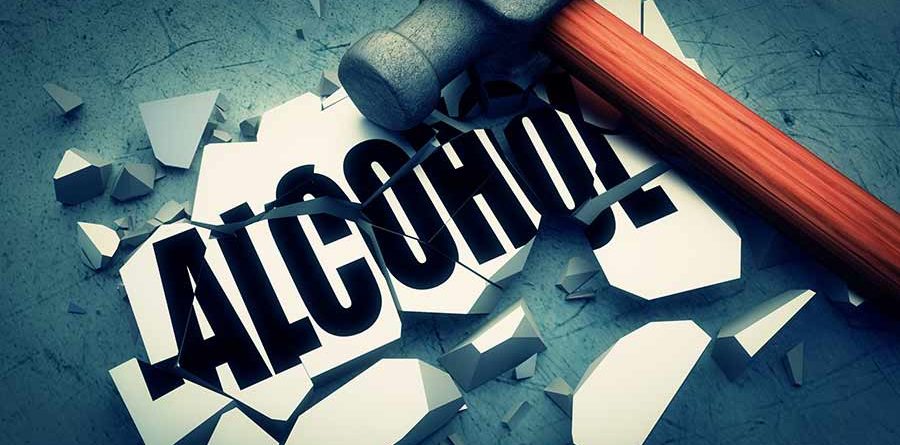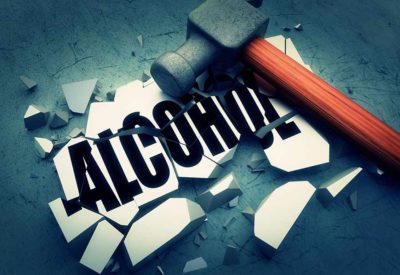What’s the Success Rate of Alcohol Recovery?
Those considering treatment for a drinking problem naturally may wonder about the success rate of alcohol recovery as it relates to their own prospects for finding freedom from the drug. The answer to that question is nuanced, and it requires a closer look at alcohol relapse rates, long-term treatment outcomes, and common arguments raised by critics of rehab.
Alcohol Abuse and Rates of Relapse
Some bad press in recent years about the so-called “revolving door” of alcohol rehab treatment has cited high rates of alcohol relapse as evidence that the success rate of recovery from alcohol addiction is low. On this same basis, critics of alcohol rehab have made the case that alcohol treatment is useless. One argument even likened alcohol use disorder to the common cold, suggesting that like a cold, the disease goes away on its own without treatment.
Such statements are harmful, because they suggest that alcohol addiction (like the common cold) is not treatable—when in fact the disease is very treatable. And, sadly, those likely to suffer the most from these mischaracterizations of alcohol use disorder are probably the very people who have the most to gain from getting help for a drinking problem. In their case, a compulsive pattern of drinking has continued despite negative consequences—among them, real physiological changes to the brain—with the result that daily life has become unmanageable.
Needless to say, the common cold is a different phenomenon altogether.
A closer equivalent to alcohol use disorder would be other chronic medical illnesses involving high rates of relapse, such as diabetes, hypertension and asthma. Alcoholism and alcohol abuse evidence similarly high rates of relapse (in the 40 to 60 percent range).
And the studies suggest that these rates of relapse do indeed decrease with treatment interventions. A study published in the journal Addiction compared rates of relapse between problem drinkers who received alcohol treatment and those who did not, for example, and found that the rate of successful short-term abstinence among the first group (those treated for alcohol abuse) roughly doubled the rate of successful short-term abstinence among the second group (those not treated for alcohol abuse). In other words, the rate of alcohol relapse significantly decreased with treatment—at least during short-term recovery.
Long-Term Treatment Outcomes for Alcohol Use Disorder
These treatment outcomes and their link to higher success rates in early recovery are not in themselves a cut-and-dry predictor of long-term success in recovery. However, they are evidence that alcohol treatment can reduce the risk of relapse and lengthen abstinence at a time when vulnerability to relapse is highest (during early recovery). That’s important to note because the studies also show that just one year of successful sobriety greatly improves one’s longer-term recovery prospects.
Still, other research shines a light on the benefits of long-term treatment for alcohol use disorder. Findings from an eight-year follow-up of treated and untreated problem drinkers found that at the eight-year mark, those who received help—and had gotten help quickly—fared better. What this study did not mention, but what’s also important to note, is that those who seek alcohol treatment generally exhibit the greatest severity of the addiction.
Success Rate for Alcohol Recovery—and Influencing Factors
An exact success rate for alcohol recovery is hard to pin down for various reasons. For example, survey results released just this year suggest that more than one third (35.9 percent) of those diagnosed with alcohol dependence go on to “fully recover” the following year. (And those in treatment and in 12-step groups may hear similar estimates for the success rate of alcohol recovery: roughly 30 percent, or one in three people.)
Such figures are at best rough estimates, for the reason that a host of individual variables compromise the accuracy of efforts to quantify success rates across a large population of drinkers. Consider the above survey, for example. The 35 percent figure included “low-risk drinkers,” who are less likely to seek treatment for an alcohol problem in the first place; and those surveyed were also largely college-educated—another factor that is linked to higher success rates. In fact, a separate study found that when it comes to success in recovery, treatment is a notable equalizer, giving those without a college education a leg-up next to their college-educated peers.
The reality is that so many individual variables factor into the success of alcohol recovery that it’s hard to speak in terms of one universal rate of success. A strong network of support, including close family and friends, increases one’s chances of successful recovery. So does marriage when both spouses are in recovery and/or when they have received behavioral counseling (i.e., treatment).
On the other hand, other individual social and medical factors can impede recovery and pose obstacles to success. One common impediment to successful recovery, for example, is the presence of an untreated co-occurring disorder, or “dual diagnosis.” In such cases, diagnosis and treatment can be even more critical to finding success in alcohol recovery.
While treatment for alcohol use disorder (AUD) and mental health disorder previously occurred separately and still does in some cases, current research shows the value of treating both simultaneously.
Learn more about dual diagnosis treatment.
What Defines “Success”?
In alcohol recovery, “success” is most often measured in terms of total days of sobriety, or uninterrupted periods of abstinence, as in alcohol-free for six months post-treatment. Yet, since alcohol addiction is a relapsing brain disease, success in alcohol recovery cannot be so narrowly defined. Even though abstinence is at the heart of most 12-step groups, the new working definition of recovery by the Substance Abuse and Mental Health Services Administration (SAMHSA) characterizes it as “a process of change.” Guiding principles include the recommendation of abstinence as the “safest route” for those with substance use disorders (SUDs), which include AUDs, SAMHSA notes that “recovery occurs via many pathways.”
Some who’ve completed treatment and are in alcohol recovery will relapse one, several or many times. Each person has a unique journey to successful recovery, and the fact that they return to treatment on one or more occasions is not an indication of failure. On the contrary, it may mean that there are still lessons to be learned, more in-depth practice in developing and implementing healthy coping strategies and healthier lifestyle behaviors. Progress in alcohol recovery, then, should be the goal. Learn from everything – what works well, where you find you need help, what trips you up or causes stress, people that both encourage, nurture and support your alcohol recovery. Continual growth and improvement, and resilience that helps you cope with setbacks is part of success in alcohol recovery.
In an analysis published in 2012, “Recovery/Remission from Substance Use Disorders,” author William L. White, MA notes that “Recovery research is progressing beyond a narrow concern with the duration or stability of abstinence or remission toward an increased focus on the quality of personal and family life in long-term recovery.”
White’s analysis of addiction treatment follow-up studies of adult clinical samples (size of 300 or more) and follow-up periods of 5+ years found remission/recovery rates of 46.4 and 46.3 percent, respectively.
Factors That Improve the Success Rate
Once achieving abstinence, a newly-sober patient in recovery can enhance his or her chances of maintaining sobriety by continuing with post-treatment care, first on an intensive outpatient basis and then on to continuing care or aftercare programs, with ongoing 12-step participation and/or individual counseling. Patients in recovery who received integrated care for AUDs and co-occurring disorders, according to research, may have better recovery outcomes.
Also, since recidivism is so high among those in alcohol recovery, reinforcement and support from medical professionals and 12-Step groups on a continuing basis have shown to be instrumental in building a solid foundation in sobriety.
Education and coping skills training and relapse prevention planning are crucial components of alcohol recovery. That’s because they have a primary focus on identifying the kinds of high-risk situations where drinking may be involved and building a set of coping skills to help the newly-sober individual deal with those situations without resorting to drinking.
Learn more about Alcohol Aftercare.
Alcoholics Anonymous
Founded in Akron, Ohio in 1935 by Bill Wilson and Bob Smith, Alcoholics Anonymous (AA) is the oldest and best-known of the self-help groups. Its program involves spiritual and character development and is based on the premise that successful recovery depends on turning yourself over to a “higher power” that is personally meaningful and admitting you are powerless over alcohol and other drugs of abuse.
While some people may achieve sobriety without formal treatment and solely through participation in 12-step groups such as AA, the role of 12-step programs in the broader realm of treatment is significant. Indeed, many of the best and most effective alcohol recovery treatment programs are based on 12-step principles. AA may be particularly valuable for those with chronic, recurring AUDs who experience multiple treatment episodes, periods of abstinence and relapse.
With or without formal treatment, either through inpatient or residential treatment or intensive inpatient, outpatient treatment, aftercare or continuing care, AA and other mutual help groups provide ongoing support for alcohol recovery. A primary advantage is that AA is available nights and weekends and the organization encourages its members to call each other whenever they need help. AA is an adaptive community-based system that is highly responsive to changes with relapse risk and, as such, plays an important role in the potential success rate of alcohol recovery.
What Most Successful Rehab Programs Include
Clearly, some alcohol rehab programs stand out as more effective than others. Those with the most post-treatment success rates are accredited by The Joint Commission. In addition to a client-centered include an onsite medically-supervised detox facility, residential treatment (inpatient drug rehab and alcohol treatment), long-term treatment, medication-assisted treatment, dual-diagnosis treatment, along with comprehensive array of evidence-based practices and therapies, integrated and simultaneous treatment of AUDs and co-occurring disorders, offer intensive inpatient rehab and outpatient programs, continuing care, drug and alcohol aftercare services, and alumni programs.
SOURCES
National Institute on Alcohol Abuse and Alcoholism. “Advances in Alcoholism Treatment.” Retrieved from https://pubs.niaaa.nih.gov/publications/arh334/295-299.pdf
National Institute on Alcohol Abuse and Alcoholism. “Alcohol Use Disorder.” Retrieved from https://www.niaaa.nih.gov/alcohol-health/overview-alcohol-consumption/alcohol-use-disorders
National Institutes of Health. “Alcohol Dependence: Alcoholism.” Retrieved from https://report.nih.gov/NIHfactsheets/Pdfs/AlcoholDependence(Alcoholism)(NIAAA).pdf
Philadelphia Department of Behavioral Health and Intellectual disAbility Services, Great Lakes Addiction Technology Transfer Center. “Recovery/Remission from Substance Use Disorders.” Retrieved from http://www.naadac.org/assets/1959/whitewl2012_recoveryremission_from_substance_abuse_disorders.pdf
Substance Abuse and Mental Health Services Administration. “Recovery and Recovery Support.” Retrieved from https://www.samhsa.gov/recovery
The Joint Commission. “Facts about Behavioral Health Care Accreditation.” Retrieved from https://www.jointcommission.org/facts_about_behavioral_health_care_accreditation/


